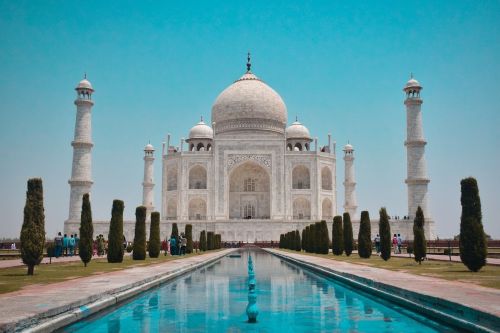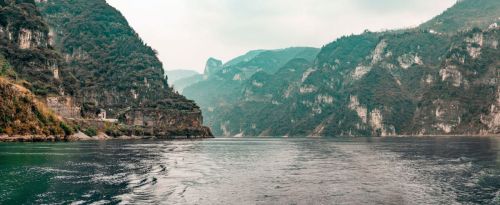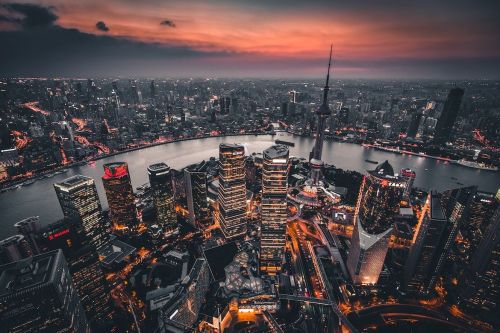The Forbidden City, also known as the Imperial Palace in Beijing, is one of the most fascinating monuments in the world. This magnificent and mysterious site has been the center of political and cultural power in China for centuries. Built in the 15th century, it served as the residence of the emperors who ruled there for more than five centuries.
The Forbidden City contains the rich history, architecture and culture of China's Ming and Qing dynasties. It is not only a remarkable tourist attraction, but also a cultural heritage that reminds us of the power of the emperors and their influence on Chinese history.
During the Ming and Qing Dynasties, it was located in the center of the Imperial City. There were seven gates leading into the Imperial City, which was surrounded by a wall. It included historical sites such as the Forbidden City, Tiananmen, Zhongnanhai, Beihai, Zhongshan, Jingshan, Taimiao (Imperial Ancestral Temple) and Xiancantan.
After the fall of the Qing Dynasty in 1912, the Imperial City was taken over by the government of the People's Republic of China.
It was the seat of the Ming Dynasty until 1644, when the Forbidden City was captured by rebel forces led by peasant leader Li Zicheng. He proclaimed himself Emperor of the Shun Dynasty. The last emperor of the Ming Dynasty, Chongzhen, hanged himself.
The self-proclaimed emperor Li Zicheng was soon forced to flee from the Manchus, who set fire to much of the Forbidden City.
At that time, the names of major buildings were changed to emphasize "harmony" instead of "supremacy". Bilingual plaques (Chinese and Manchurian) were introduced, and religious elements appeared in the palace.
China's last emperor, Puyi, was forced to abdicate in 1912 (he was six years old at the time). The young emperor, or rather his family, relinquished power in exchange for certain benefits, which included a steady income from the state, luxurious living conditions (the family continued to live in the Forbidden City for some time), and the rank of a foreign head of state in hospitality.
The emperor received personal privileges: the honorary title of emperor, a large state pension, and personal protection.
Puyi served as China's emperor one more time, for twelve days in 1917, when the monarchist general Zhang Xun restored his rule by force. At that time, a Republican plane dropped three bombs on the Imperial Palace. The incident is considered the first case of aerial bombing in East Asia.
The architectural idea was to present the imperial code of ethics through a physical installation. Its courtyard, although built on a luxurious scale, has the appearance of an ordinary quadrangle.
The city is surrounded by a 10-meter high defensive wall and a water-filled moat 52 meters wide and 6 meters deep. There is a gate with a tower in each direction and a corner tower at each of the four corners of the wall.
The main entrance to the Forbidden City is the South Gate, also known as the Meridian Gate. The other gates are: Gate of Divine Might, East Glorious Gate and West Glorious Gate.
According to legend, there should be 9999 and 1/2 rooms. Half a room is symbolic - a palace with 10,000 rooms could only exist in heaven, so the "Sons of Heaven" must be satisfied with only 9999 and 1/2.
It is the largest surviving wooden structure in China. It rises about 30 meters above the level of the surrounding square. It has a coffered ceiling decorated with a coiled dragon from whose mouth comes a set of metal balls called the "Xuanyuan Mirror". This is a reference to the Yellow Emperor (Huang Di), a mythological Chinese ruler. Legend has it that the metal spheres will fall and crush anyone who usurps the throne.
During the Ming Dynasty, the emperor sat here to discuss state affairs. During the Qing Dynasty, this hall was used for ceremonial purposes such as coronations and imperial weddings.
To the north is Jingshan Park, also known as Prospect Hill, an artificial hill formed from soil dug during the construction of a moat and from nearby lakes.
To the west is Zhongnanhai, a former royal garden on two connected lakes that now serves as the residence for leadership of the Communist Party of China and the Government of the People's Republic of China.
To the northwest is Beihai Park. Built in the 11th century, it is one of the largest gardens in China. It covers an area of 69 hectares and contains many historically important buildings, palaces and temples. Beihai Park has been open to the public since 1925.
These were: The Imperial Family Shrine (Imperial Ancestral Temple), where the emperor worshipped the spirits of his ancestors, and the Imperial Shrine of State (Shejitan), a place where national ceremonies dedicated to land and grain were held during the Ming and Qing dynasties and where the emperor could worship the spirits of his ancestors and the spirit of the nation.
Leading up to it is the Tiananmen Gate, now decorated with a portrait of Mao Zedong in the center and two posters on either side. One the lefto one reads "Long Live the People's Republic of China" and the right "Long Live the Great Unity of the World's Peoples".
This gate connects the Forbidden City with the modern symbolic center of the Chinese state, Tiananmen Palace.
There are only two exceptions: the library in the Hall of Literary Brilliance has black tiles, and the residences of the Crown Prince have green tiles.
The main halls of the Outer and Inner Courtyards are arranged in groups of three - the shape of a Qian trigram, representing Heaven. The residences of the inner courtyard are arranged in groups of six - the shape of a Kun trigram, representing the earth.
The sloping ridges of the roofs are decorated with a series of statues. The number of statues reflects the status of the building - a smaller building might have only three or five. The Hall of Supreme Harmony has ten statues - the only building in the country to do so during the imperial era.
The tenth statue, called "Hangshi", is also unique in the Forbidden City.
In total, the collection consists of 1,862,690 pieces of art. The Imperial Libraries also contained a large collection of rare books and historical documents, including government documents from the Ming and Qing Dynasties, which are now housed in the First Historical Archives.
After the end of World War II, the collection was returned to the museum in Nanjing, but after the Communist victory in the Chinese Civil War, the government decided to send the collection to Taiwan.
Of the 13,491 boxes of evacuated artifacts, 2,972 are now in the National Palace Museum in Taipei. More than 8,000 boxes have been returned to Beijing, but 2,221 remain in storage at the Nanijng Museum.
The collection consists of more than 1,000 pieces. Among the exhibits are those made in China as well as those from abroad, including Great Britain, France, Switzerland, the United States and Japan.








